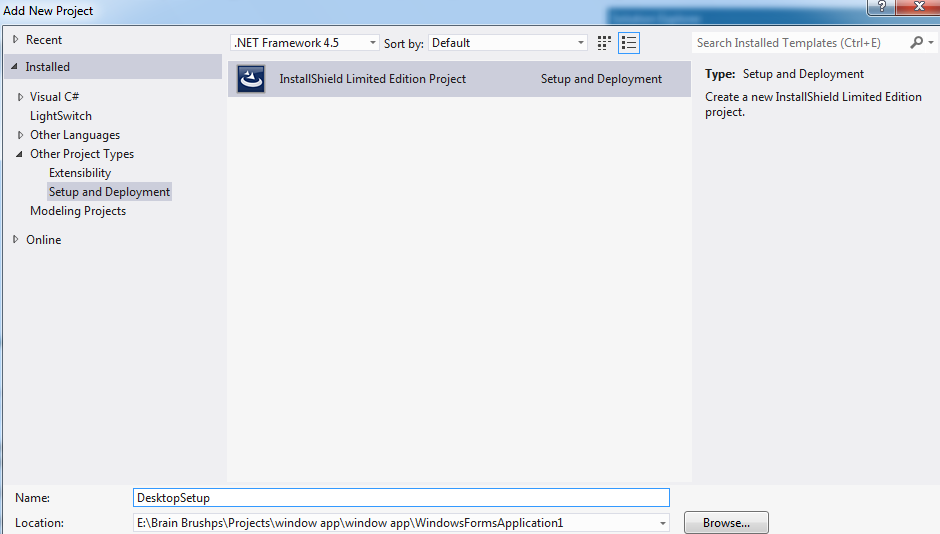

Step 6: Application Files – Here you have to select files/folders which is required to run your application. For example, if you have develop two new modules in this version however you just want to release only one module, you can select that module here.įig –5 InstallShield – Installation Architecture As this is limited/express edition you can not choose features, everything will be installed. Step 5: Installation Architecture – This step allows you to choose features you want to include in this setup. Make sure you choose all necessary options, this is important as if you miss any, your application will not work on client machine.įig –4 InstallShield – Installation Requirements

NET framework require on client machine to run your application. You can select all version of windows by choosing “No” or select appropriate version of windows by choosing “Yes”. Step 4: Application requirement – This step allows you to OS and necessary prerequisites to be installed on client machine to run your application. For simplicity I have used Sample detail in all fields.įig –3 InstallShield – Application information Step 3: Application Information – This step allows you to provide detail about your company, application and current version of application. As you can see InstallShield provide 6 simple steps to create Setup file. Once you press OK button, it will create a project and open a screen as shown in below image. From new project dialog select Other Project Types – Setup & Deployment and you can see InstallShield project as shown below. Step 2: Open visual Studio and select File New Project. Step 1: Download and Install InstallShield Express edition from here. Let me share how to create a simple Setup or MSI package for your application. I search for sometime and InstallShield which allows user to create Setup project. I am working on windows application after long time, after completing application when I decided to create a setup file in Visual Studio 2012 and found that there is no Setup and Deployment project as it was in Visual Studio 2008.


 0 kommentar(er)
0 kommentar(er)
